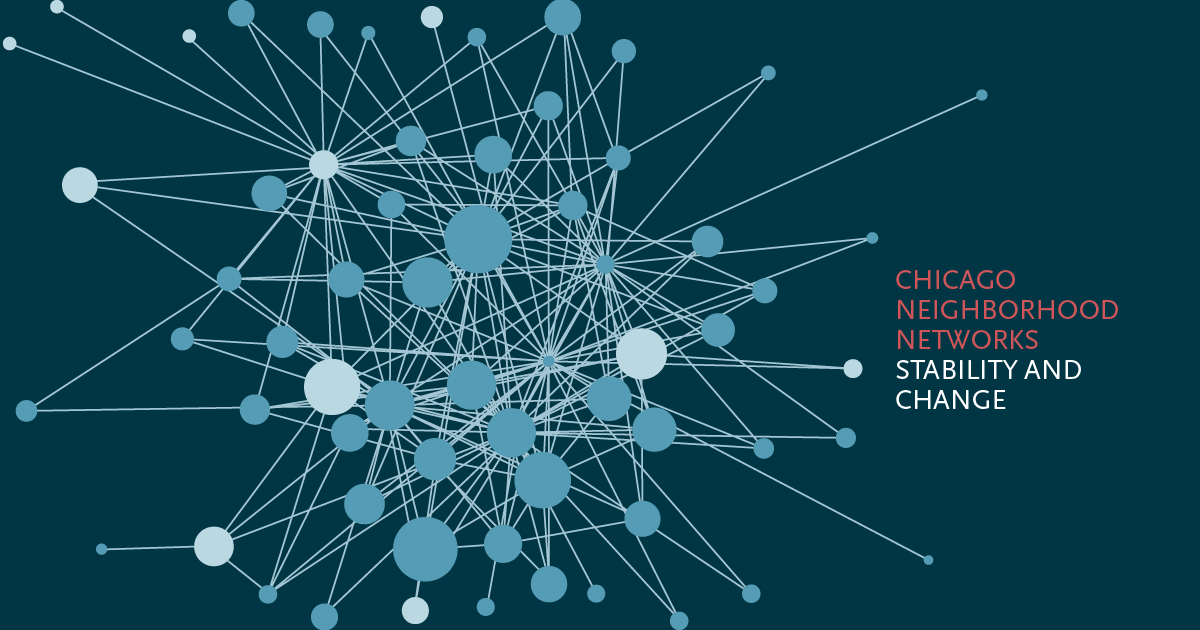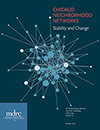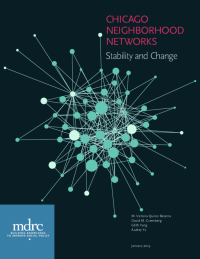Chicago Neighborhood Networks
Stability and Change

 Neighborhood improvement initiatives have long underscored the importance of local organizations working together, sometimes in formal partnerships and sometimes through less formal coordination and engagement. Coordinated efforts may help neighborhoods achieve community improvement outcomes that include leveraging public sector investments and actions beyond what any individual organization could achieve on its own. A community’s capacity to improve its neighborhood may hinge fundamentally on the nature, endurance, and evolution of the ties that bind local organizations, and the flexibility of organizational networks to address new challenges.
Neighborhood improvement initiatives have long underscored the importance of local organizations working together, sometimes in formal partnerships and sometimes through less formal coordination and engagement. Coordinated efforts may help neighborhoods achieve community improvement outcomes that include leveraging public sector investments and actions beyond what any individual organization could achieve on its own. A community’s capacity to improve its neighborhood may hinge fundamentally on the nature, endurance, and evolution of the ties that bind local organizations, and the flexibility of organizational networks to address new challenges.
This report uses social network analysis, drawing from two surveys of local organizations over three years in nine Chicago neighborhoods, and extensive field research, and asks: How and why do neighborhood networks change or remain the same? The report looks at four dimensions of network change: (1) the place of individual organizations within a network, (2) levels of connectivity in neighborhood networks, (3) the extent to which neighborhood organizations collaborate on different issues (comprehensiveness), and (4) the distribution of potential power or influence in a network.
Key Findings
- While most organizations in the Chicago study upheld their level of neighborhood prominence, community conveners — organizations that rally others for shared purposes — remained most prominent or rose to a higher level of prominence relatively quickly. Community conveners may help sustain or enhance network capacity to coordinate or mobilize partners for collective efforts.
- Overall, levels of connectivity — the proportion of all possible connections between organizations within a neighborhood network that are realized — declined between surveys for six neighborhoods and remained similar for three neighborhoods. The drop in connections occurred despite declining numbers of network organizations — a development that would normally make it easier for organizations to connect. In some cases, a state budget crisis led to less funding for core activities and this may have weakened neighborhood organizations’ capacity to build and maintain partnerships — and advance neighborhood improvements.
- Across neighborhoods, partnerships grew less comprehensive over time, spanning fewer areas of work. In some instances, pressing neighborhood developments such as increasing gentrification or a preoccupation with police violence led organizations to focus on single issues rather than partner with others on multiple issues. These changes might highlight the flexibility of neighborhood networks that face challenges to their communities.
- Overall, the distribution of potential power or influence among organizations within each neighborhood network was stable in the three-year period between 2013 and 2016. This suggests that overall patterns in the way power and influence are distributed in a network might be less susceptible to change in the short term. Depending on the circumstances, this may sustain strong community capacity or hinder improvements to it.
This study highlights the importance of understanding the dynamic nature of neighborhood networks in order to gauge a community’s capacity to improve neighborhood outcomes.






